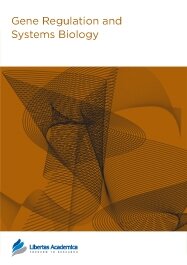

Publication Date: 20 Jun 2008
Journal: Gene Regulation and Systems Biology

1Gradalis, Inc., Dallas, TX. 2Mary Crowley Cancer Research Centers, Dallas, TX. 3University of Applied Sciences Berlin, Department of Life Sciences and Technology, Germany. 4HIBM Research Group, Encino, CA. 5MetroHealth Medical Center, Cleveland, OH. 6Sammons Cancer Center, Baylor University Medical Center, Dallas, TX.
Abstract
Hereditary Inclusion Body Myopathy (HIBM2) is a chronic progressive skeletal muscle wasting disorder which generally leads to complete disability before the age of 50 years. There is currently no effective therapeutic treatment for HIBM2. Development of this disease is related to expression in family members of an autosomal recessive mutation of the GNE gene, which encodes the bifunctional enzyme UDP-GlcNAc 2-epimerase/ManNAc kinase (GNE/MNK). This is the rate limiting bifunctional enzyme that catalyzes the first 2 steps of sialic acid biosynthesis. Decreased sialic acid production, consequently leads to decreased sialyation of a variety of glycoproteins including the critical muscle protein alpha-dystroglycan (α-DG). This in turn severely cripples muscle function and leads to the onset of the syndrome. We hypothesize that replacing the mutated GNE gene with the wildtype gene may restore functional capacity of GNE/MNK and therefore production of sialic acid, allowing for improvement in muscle function and/or delay in rate of muscle deterioration. We have constructed three GNE gene/CMV promoter plasmids (encoding the wildtype, HIBM2, and Sialuria forms of GNE) and demonstrated enhanced GNE gene activity following delivery to GNE-deficient CHO-Lec3 cells. GNE/MNK enzyme function was significantly increased and subsequent induction of sialic acid production was demonstrated after transfection into Lec3 cells with the wild type or R266Q mutant GNE vector. These data form the foundation for future preclinical and clinical studies for GNE gene transfer to treat HIBM2 patients.
PDF (515.65 KB PDF FORMAT)
RIS citation (ENDNOTE, REFERENCE MANAGER, PROCITE, REFWORKS)
BibTex citation (BIBDESK, LATEX)
XML
PMC HTML
Publishing in Air, Soil and Water and Water Research was the best experience I have had so far in an academic context. The review process was fair, quick and efficient. I congratulate the team at Libertas Academica for a very well managed journal.Magnus Karlsson (IVL Swedish Environmental Research Institute, Stockholm, Sweden) What Your Colleagues Say
Copyright © 2012 Libertas Academica Ltd (except open access articles and accompanying metadata and supplementary files.)
FacebookGoogle+Twitter
PinterestTumblrYouTube